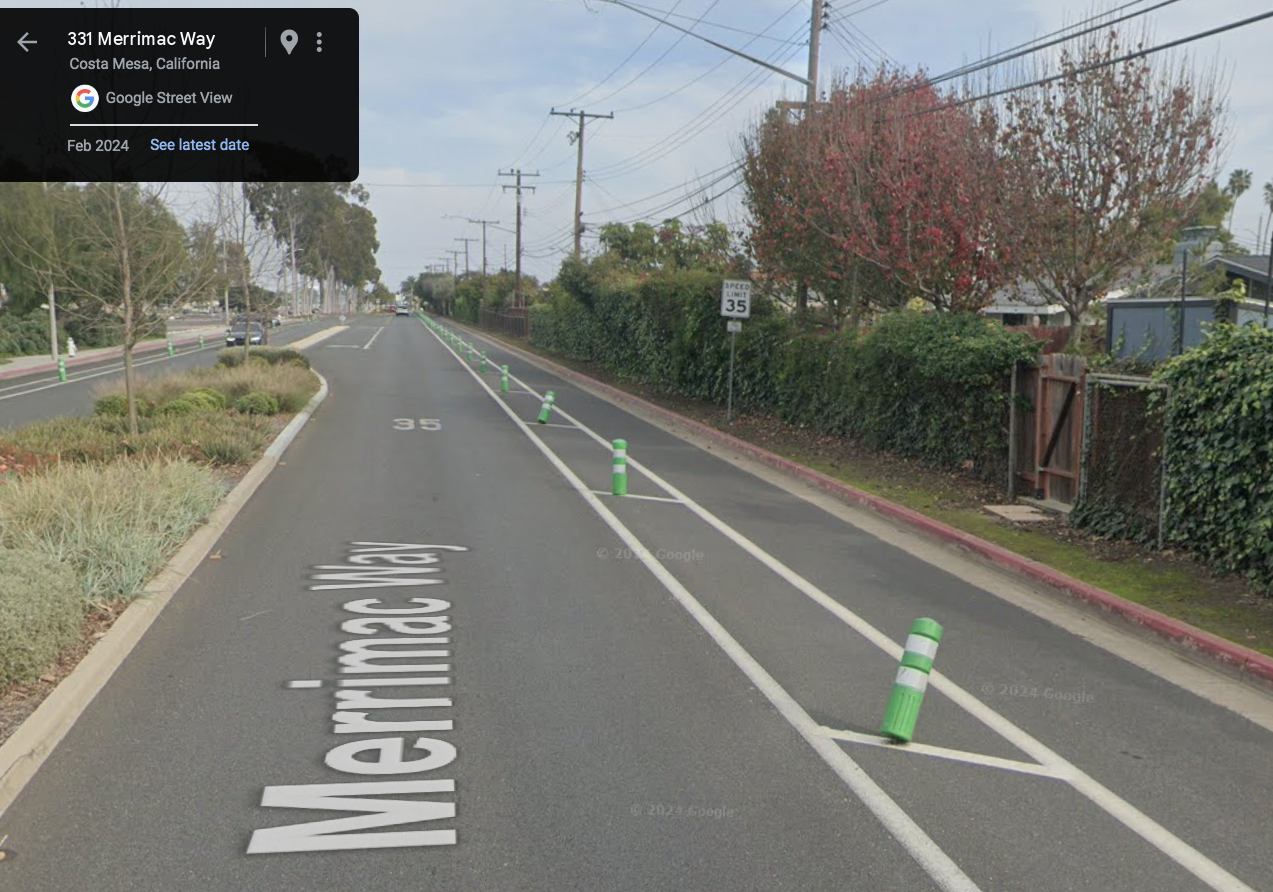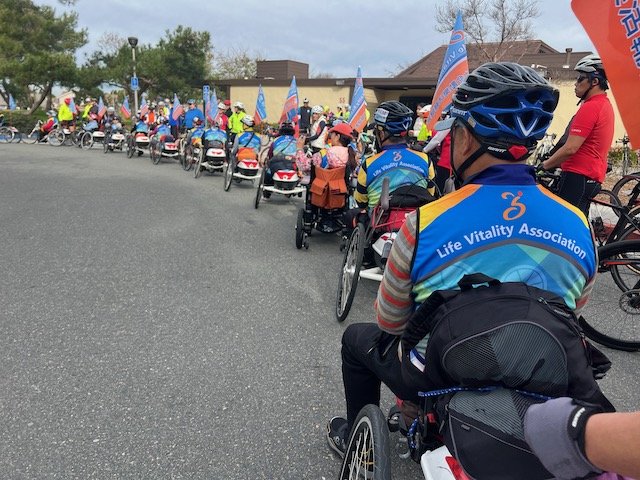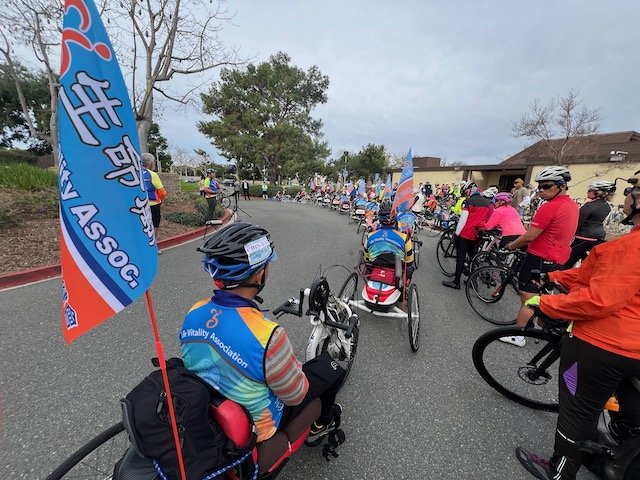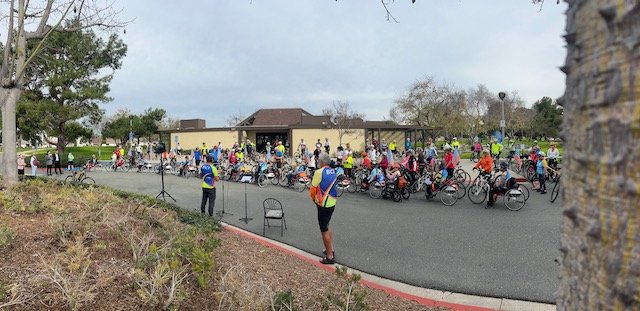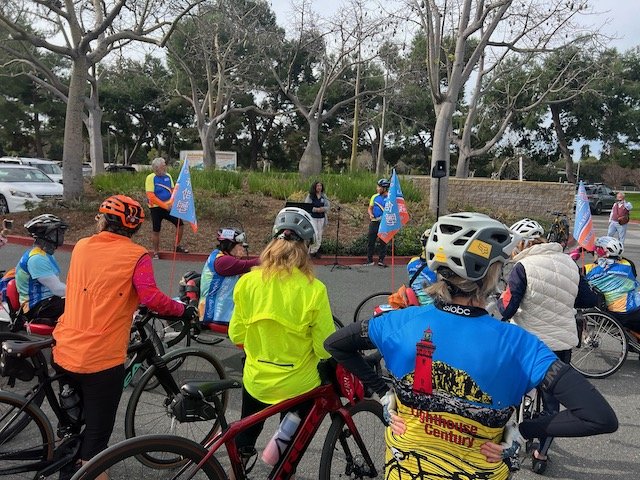BCI is coordinating a week of cycling and adventure in and around
Carson City, Nevada from May 23rd to 30th, 2025.
As plans develop they will be posted here but plan on an 8 hour drive to Carson City,
or fly to Reno in 4 1/2 hours with 1 connection (23 miles from Carson City = 1.5 hour with RTC bus)
(potentially with bicycles and luggage hauled up by trailer)
Dreamed up by the wonderful experiences of BCI Member Mark Shapiro, we already have 50 rooms reserved, at two adjacent hotels with plans for various rides and hikes in the area, and a chance to explore one of the nicest parts of Nevada.
For details, reach out to Mark at markshapiro.email@gmail.com
LODGING:
(Click the blue hyperlinks below for your discounted reservation directly with the hotel)
Hampton Inn & Suites $143/night + tax including Hot Breakfasts
My Place Hotel; $109/night + tax including Cold Breakfasts
Book your rooms NOW!
72 hour fully refundable, but to lock in these rooms and discounts today!
Lake Tahoe is a 25-minute drive away or a 1,700 elevation cycling climb with lunch atop, shoreline trails, great hiking spots.
If you have an RV, there is public street parking on the cul-de-sac between the two hotels; No hookups but if self contained you can park there. Those wanting to stay in their RV can easily find full-service utility spots nearby.
AFTER YOU HAVE LODGING BOOKED, Register with BCI HERE
This located only a few miles from the hotel and on nice route.
Those who enjoy cycling in town can explore the tree-lined streets around the Kit Carson Trail, featuring more than 60 historical landmarks. The nearby V&T Trail is another popular ride, taking cyclists along a section where the old railroad once ran and into Longview Ranch Trails, weaving through quiet neighborhoods and past parks and playgrounds. On the eastern side of the city, the Linear Park Trail takes riders along a paved multi-use path that extends from Governors Field to Moffat Open Space and on to the Mexican Ditch Trail. Click here for all trails.
More advanced bike routes close but outside of Carson City include the Franktown Loop, which offers a scenic ride through estate- and farm-lined roads, Kingsbury Grade, a very challenging climb to Lake Tahoe with stunning views along the way, and the ride from Carson City to Virginia City, with a steep climb that leads to this famous old mining town.
Visit Carson City .com A hundred different things to do!
Weather Forecast:
Weather.com, click & scroll ahead to the month of May:
Examples of local rides:
Bikemap Rides
Komoot routes
We will have many short, medium, long, extra-long, and hill challenges to choose from each day, more routes/day than we can ride.
(We will be putting together BCI routes and cue slips)
Weather permitting, all organized rides and hikes will start at 9am (unless otherwise specified), designated rest stop and lunch stops either on the road or back in town.
Plan for warm weather, cold weather, and rainy weather. A basics list of what to pack/bring will be provided. Projected weather at the end of May is 73-75 degrees days, 45-degree nights.
Carson City elevation is at 4,600 feet elevation.
Dinner-N-gab each night at a restaurant with a private room area, attendance is of course optional. (Location, day, and time TBA). A curated list of other places for food will be provided. For those that don’t want to bike or hike each day (or for more afternoon fun), a list of attractions and things to do will also be provided
Maps & Resources to get an idea of what is in the area:
CARSON CITY/DOUGLAS COUNTY TRAIL GUIDE (PDF)
ASH TO KINGS TRAIL MAP (PDF)
CARSON CITY MULTI-USE ROUTES MAP (4TH EDITION)
CARSON CITY MULTI-USE ROUTES TIPS & INFO (4TH EDITION)
HISTORIC VIRGINIA & TRUCKEE TRAIL MAPS
Eateries and Group Dinners with private room, schedule TBA:
• Red’s Old 395 (BBQ, salads, etc.)
• San Marcos Grill (Mexican)
• Great Basin Brewing Co (lots of options)
• Flavors of India (Indian)
• Juan’s Mexican Grill
• Nashville Social Club (music & dinner hosted, except alcohol)
Daytime-only nibbles
• LA Bakery (7am- 4pm)
• Comma Cafe (trendy breakfast/lunch (7am - 4pm)
• La Tapatia (Mexican Ice Cream, (noon to 8:30pm)
• Old World Coffee Roasters (7am - 5pm)
Lunch / Dinner other choices
Sassafras (eclectic)
Sumi Sushi
Poke Bowl (create own Japanese - take out)
Yang’s Kitchen (Chinese)
Vino’s Pizza (high end great)
Thai Basil (Thao)
Bully’s (bar food)
Pho Country (close to hotel-great vietnamese)
Cucina Lupo (Italian)
Soups (soups/sandwiches/salads/ice cream)
Carson Tahoe Health Hospital Cafeteria (Great salad bar & huge
sandwiches, very reasonable $.
Breakfast (Other than free breakfast at the hotels / lunch spots if not on the route:
Starbucks close to hotels
So Juicy Juice & Salad Bar shakes, fresh juice, acai bowls, salads)
Squeeze Inn (huge portions)
Cracker Box (old style diner)
Eve’s Eatery (high end/trendy)
Paul Schat’s Bakery (fresh made pastries/bread, sandwiches, salads)
Carson Tahoe Health Hospital Cafeteria (best kept secret for low cost large great breakfasts)
Libations:
• Bank Saloon (quiet with live music - chill style)
• Shoetree Brewing (noon to 9pm)
More Fun things to do
Waterfall hike @ west end of King St (3 miles from downtown)
Historic walking tour of charming westside of Carson City, Kit Carson Trail
Multiple hikes of various levels
Sol Dispensary Tour (for those not doing the bike route rest stop)
Yoga sessions with Nichole
Carson Hot Springs (cemented pools, bring towel)
Gambling at the local casino
Lake Tahoe (30 minutes to a beach), Sand Harbor Beach State Park, Roundhill Beach
Drive to Reno, create your tour or the Classic Car Museum, walk the Truckee Riverwalk or kayak (serious whitewater depending on Winter snowfall),
NV Museum of Art,
Midtown Reno Neighborhood, restaurants.
GENOA & SURROUNDING AREAS
Eatery’s:
Questions? Contact Mark@BikeIrvine.org!
Breakfast/lunch:
• Sierra Chef (tables are outside)
• Great designer foods/pastries
• Pink Door
• Grover Hot Springs State Park (CA) - outside Markleeville (south of Genoa)

























